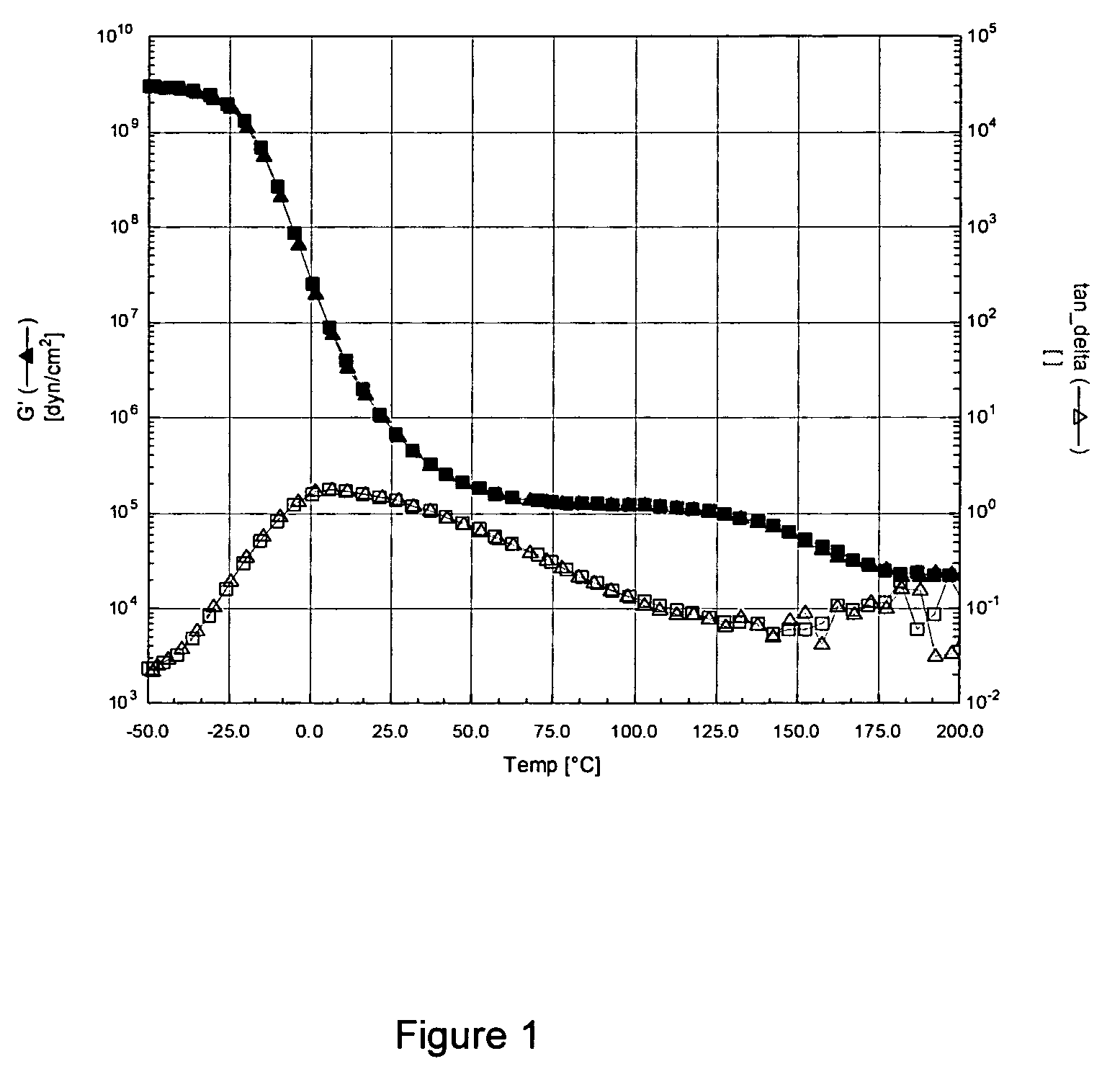Pressure sensitive adhesive tapes from cationic cure adhesives
a technology of adhesive tapes and adhesive adhesives, applied in the field of pressure-sensitive adhesives, can solve the problems of not instantaneous, system has not gained commercial acceptance in part,
- Summary
- Abstract
- Description
- Claims
- Application Information
AI Technical Summary
Benefits of technology
Problems solved by technology
Method used
Image
Examples
examples
[0035]A cationic curing adhesive 36-646A based on KLP L-207 (a liquid epoxidized block copolymer available from Kraton Polymers™) was prepared in a hot melt mixer using a pre-dispersed cationic UV-photoinitiator (UVI-6974—a triarylsulfonium salt available from Union Carbide). The pre-dispersion in L-207 was obtained from Kraton™ polymers. Methods of preparing such adhesives are described in “Kraton Liquid™Polymer / / Solid Polymer Hybrid UV Cure Adhesives with Stable Peel Strength”, by J. R. Erickson, J. K. L. Schneider, and L. M. Kegley, presented at the Pressure Sensitive Tape Council Annual Meeting, 2002.
[0036]The adhesive was melted down in an ITW hot melt tank at 200° F. and then coated via a 6 inch wide slot head onto release paper at an adhesive thickness of 5 mils. The coating passed through an Aetek 400 watt / in H-bulb and then was nipped to another release paper. The adhesive was coated to a release paper with a tighter (harder) release (T3070) and nipped to an easy release li...
PUM
| Property | Measurement | Unit |
|---|---|---|
| temperature | aaaaa | aaaaa |
| temperature | aaaaa | aaaaa |
| softening point | aaaaa | aaaaa |
Abstract
Description
Claims
Application Information
 Login to View More
Login to View More - R&D
- Intellectual Property
- Life Sciences
- Materials
- Tech Scout
- Unparalleled Data Quality
- Higher Quality Content
- 60% Fewer Hallucinations
Browse by: Latest US Patents, China's latest patents, Technical Efficacy Thesaurus, Application Domain, Technology Topic, Popular Technical Reports.
© 2025 PatSnap. All rights reserved.Legal|Privacy policy|Modern Slavery Act Transparency Statement|Sitemap|About US| Contact US: help@patsnap.com

